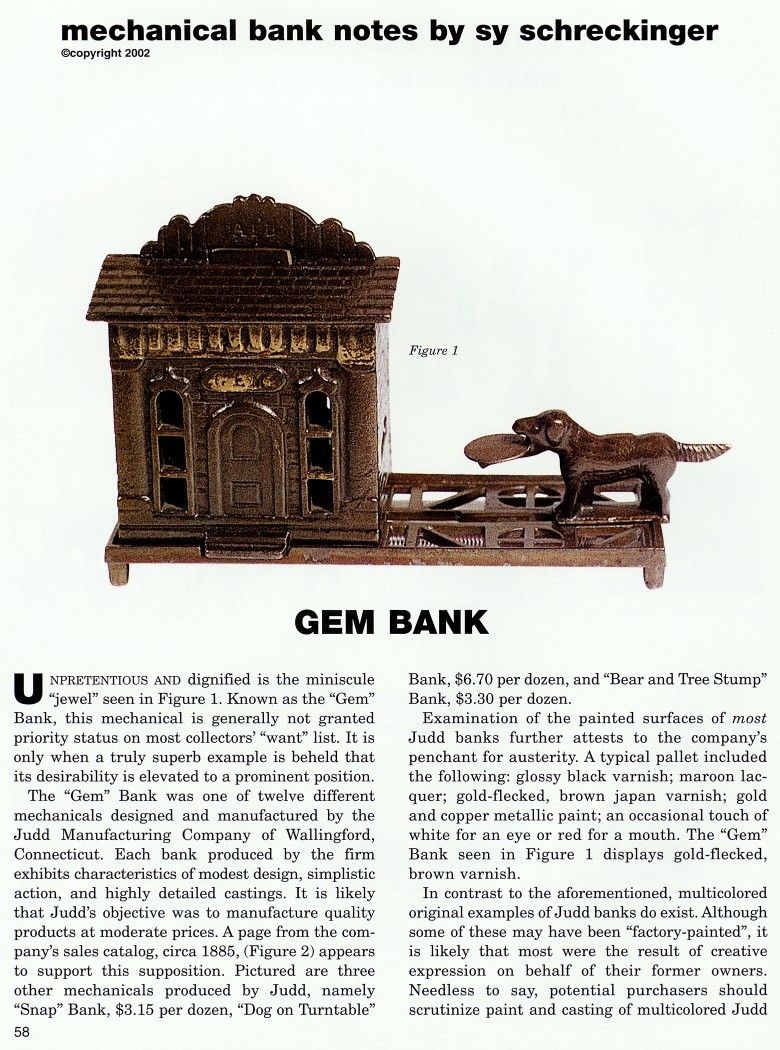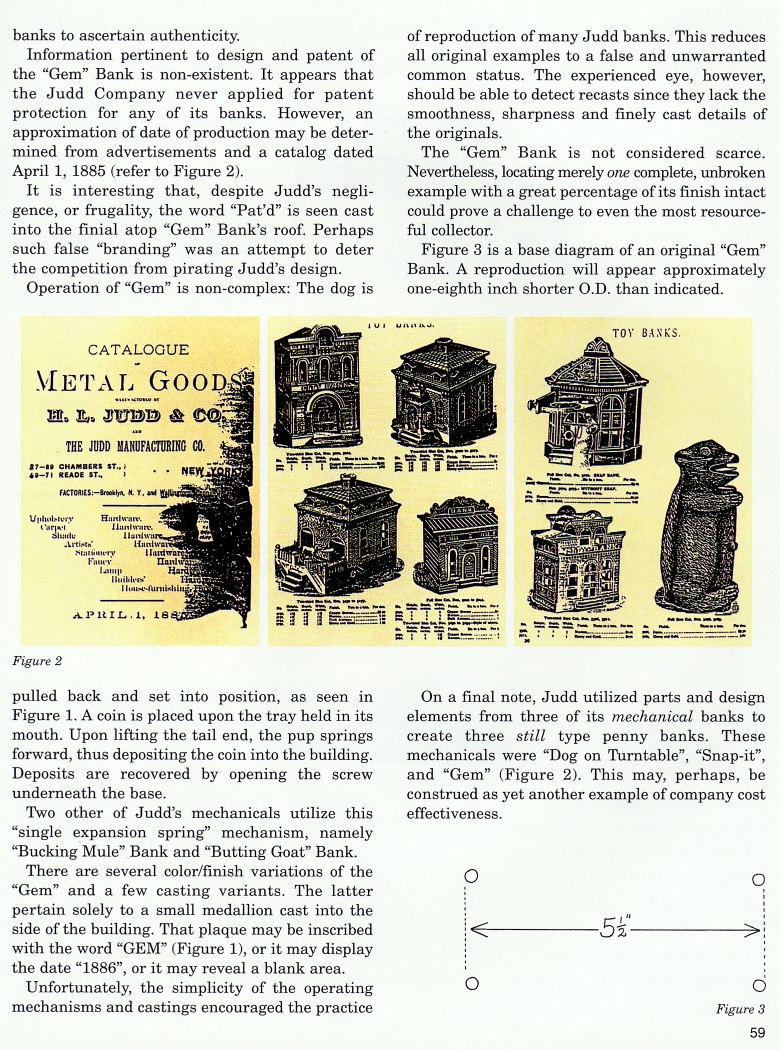|
Gem Bank
by Sy Schreckinger – ANTIQUE TOY WORLD Magazine – April, 2002
Unpretentious and dignified is the miniscule "jewel" seen in Figure 1.
Known as the "Gem" Bank, this mechanical is generally not granted priority
status on most collectors' "want" list. It is only when a truly superb
example is beheld that its desirability is elevated to a prominent
position.
The "Gem" Bank was one of twelve different mechanicals designed and
manufactured by the Judd Manufacturing Company of Wallingford,
Connecticut. Each bank produced by the firm exhibits characteristics of
modest design, simplistic action, and highly detailed castings. It is
likely that Judd's objective was to manufacture quality products at
moderate prices. A page from the company's sales catalog, circa 1885,
(Figure 2) appears to support this supposition. Pictured are three other
mechanicals produced by Judd, namely "Snap" Bank, $3.15 per dozen, "Dog on
Turntable" Bank, $6.70 per dozen, and "Bear and Tree Stump" Bank, $3.30
per dozen.
Examination of the painted surfaces of most Judd banks further
attests to the company's penchant for austerity. A typical pallet included
the following: glossy black varnish; maroon lacquer; gold-flecked, brown
japan varnish; gold and copper metallic paint; an occasional touch of
white for an eye or red for a mouth. The "Gem" Bank seen in Figure 1
displays gold-flecked, brown varnish.
In contrast to the aforementioned, multicolored original examples of
Judd banks do exist. Although some of these may have been
"factory-painted", it is likely that most were the result of creative
expression on behalf of their former owners. Needless to say, potential
purchasers should scrutinize paint and casting of multicolored Judd banks
to ascertain authenticity.
Information pertinent to design and patent of the "Gem" Bank is
non-existent. It appears that the Judd Company never applied for patent
protection for any of its banks. However, an approximation of date of
production may be determined from advertisements and a catalog dated April
1, 1885 (refer to Figure 2).
It is interesting that, despite Judd's negligence, or frugality, the
word "Pat'd" is seen cast into the finial atop "Gem" Bank's roof. Perhaps
such false "branding" was an attempt to deter the competition from
pirating Judd's design. Operation of "Gem" is non-complex: The dog is
pulled back and set into position, as seen in Figure 1. A coin is placed
upon the tray held in its mouth. Upon lifting the tail end, the pup
springs forward, thus depositing the coin into the building. Deposits are
recovered by opening the screw underneath the base.
Two other of Judd's mechanicals utilize this "single expansion
spring" mechanism, namely "Bucking Mule" Bank and "Butting Goat" Bank.
There are several color/finish variations of the "Gem" and a few casting
variants. The latter pertain solely to a small medallion cast into the
side of the building. That plaque may be inscribed with the word "GEM"
(Figure 1), or it may display the date "1886", or it may reveal a blank
area.
Unfortunately, the simplicity of the operating mechanisms and
castings encouraged the practice of reproduction of many Judd banks. This
reduces all original examples to a false and unwarranted common status.
The experienced eye, however, should be able to detect recasts since they
lack the smoothness, sharpness and finely cast details of the originals.
The "Gem" Bank is not considered scarce. Nevertheless, locating
merely one complete, unbroken example with a great percentage of its
finish intact could prove a challenge to even the most resourceful
collector.
Figure 3 is a base diagram of an original "Gem" Bank. A reproduction
will appear approximately one-eighth inch shorter O.D. than indicated.
On a final note, Judd utilized parts and design elements from three
of its mechanical banks to create three still type penny banks. These
mechanicals were "Dog on Turntable", "Snap-it", and "Gem" (Figure 2). This
may, perhaps, be construed as yet another example of company cost
effectiveness.
|


